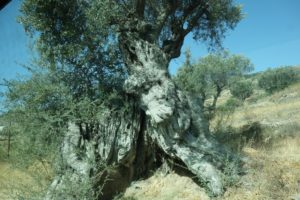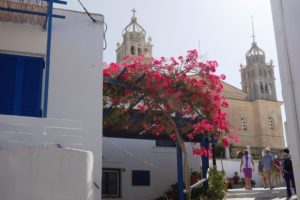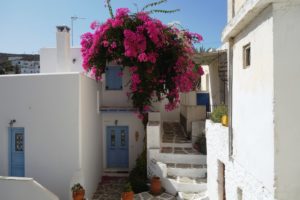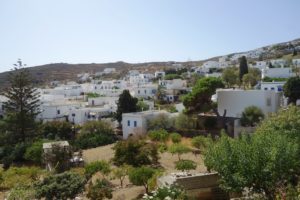We’ve spent the last two days on the island of Paros. Paros has fertile soil, plenty of water, and was an important source of marble in the classic period. Today, it has a good, balanced economy with just a small amount of tourism. It is what I think of when I think of modern Greece. This picture shows an olive tree with an incredible trunk. It is probably 100 years old and still producing olives. The olive tree is really a bush. The impressive trunk is actually several bushes mingled together. The colors are strange because I shot the picture through a bus window. The window had some kind of sun tinting.
Here’s a picture of the church in the village square, with some stunning flowers in the foreground. Many Greek families have two houses. They came from a village but had little opportunities for a job. They moved to a city and bought a house or apartment. Then they inherited the house of their parents (or grandparents). There’s no real point in trying to sell the parent’s house, so they use it as a summer home.
Greek cities are filled with tiny little alleys that wind around. This provided protection against the wind (which can be fierce), more shade in the street, and protection against pirates. So says our guide, and who am I to argue with the guide? The Greeks continue this idea even in new towns. It’s just how things are supposed to be, I suppose.
Here’s an overview of a village on Paros. It was quite scenic and relaxing. But I’m not alone in thinking that 2 1/2 days may have been a longer stay than we needed. The weather here has been at or near 100 degrees the last two days. It is much hotter than normal, and much hotter than was forecast. Everybody on the tour has said they would have packed differently if they had known what the weather would be.




